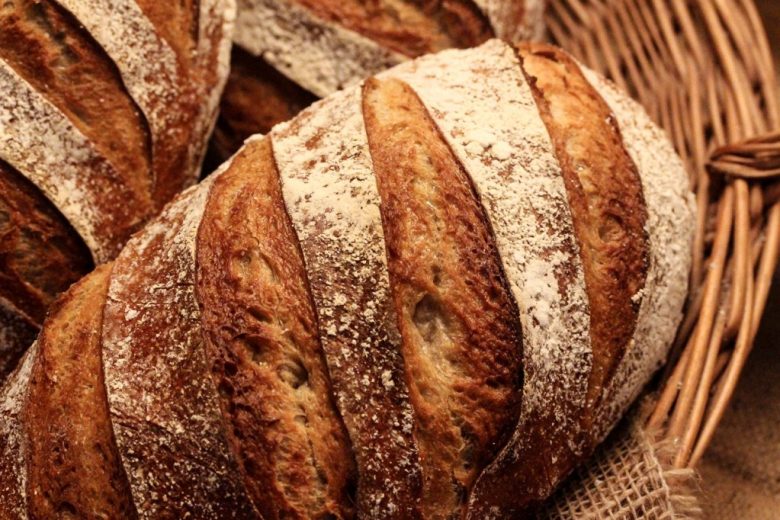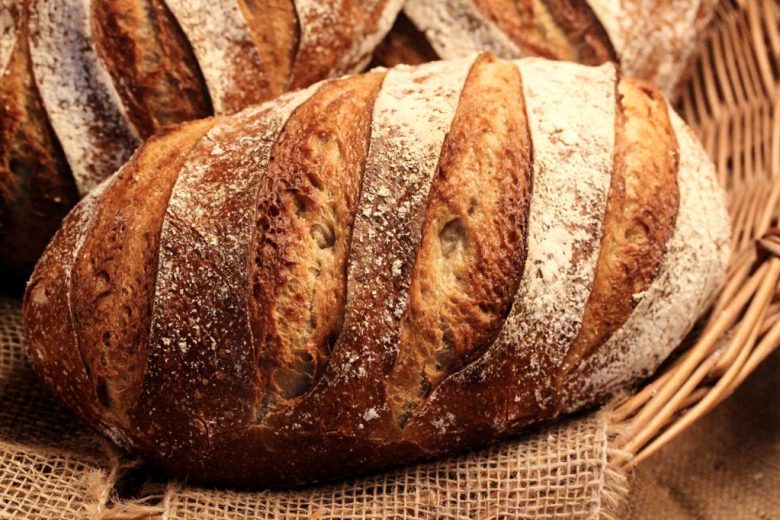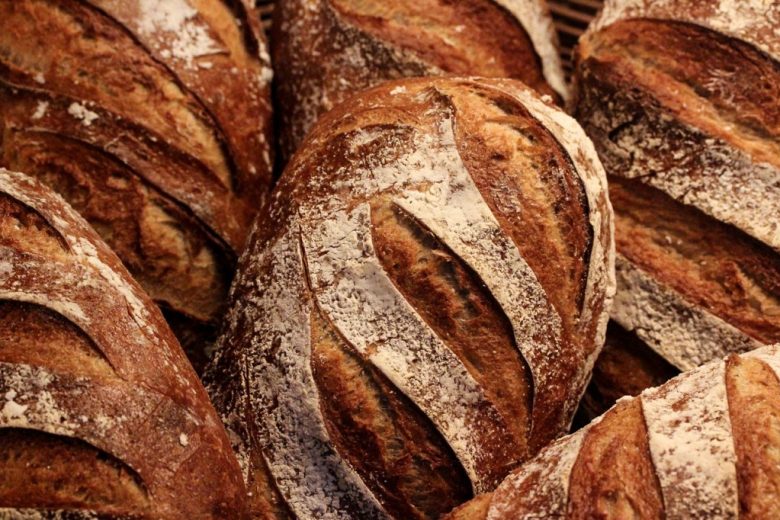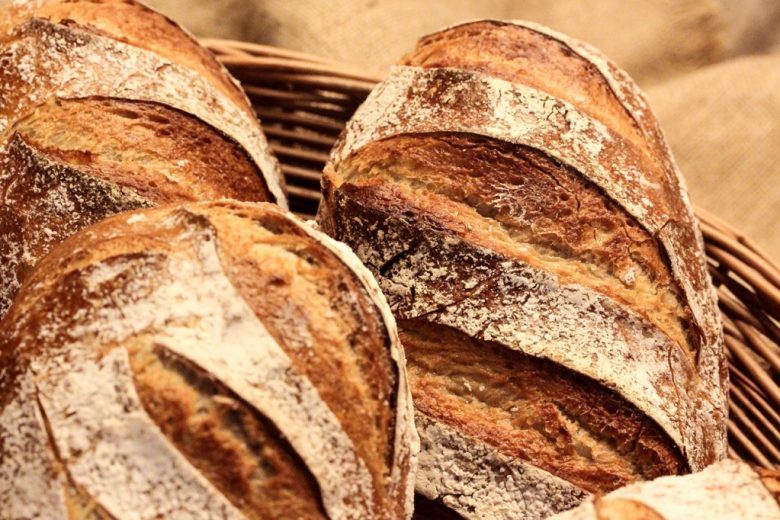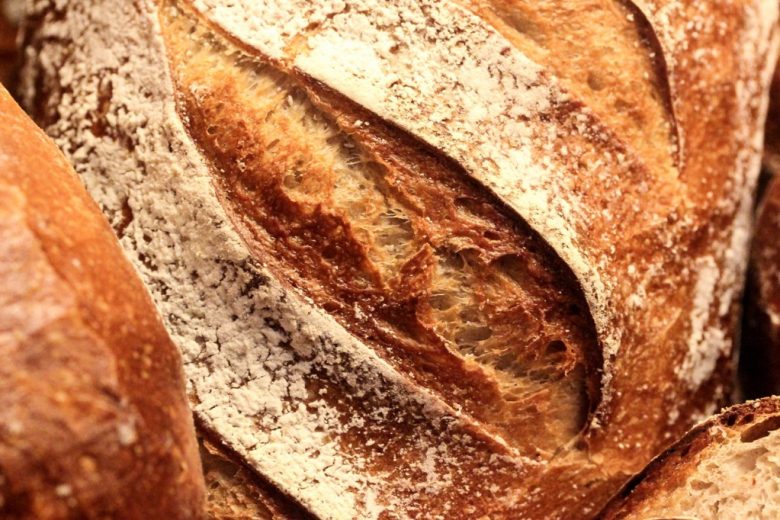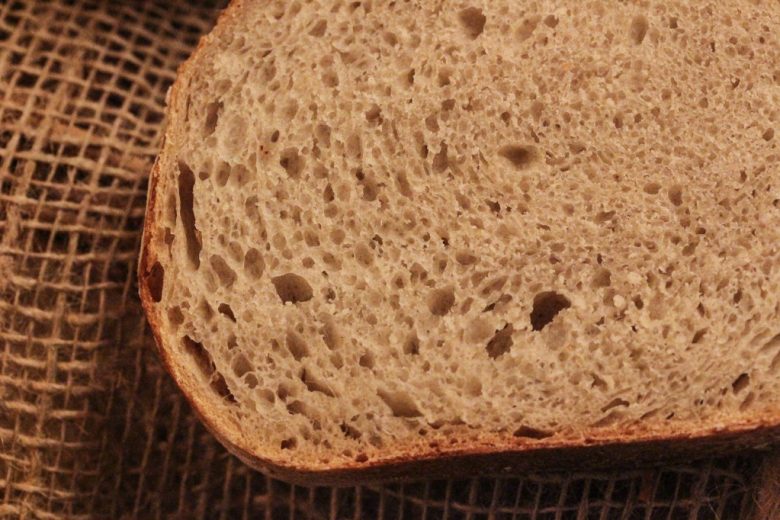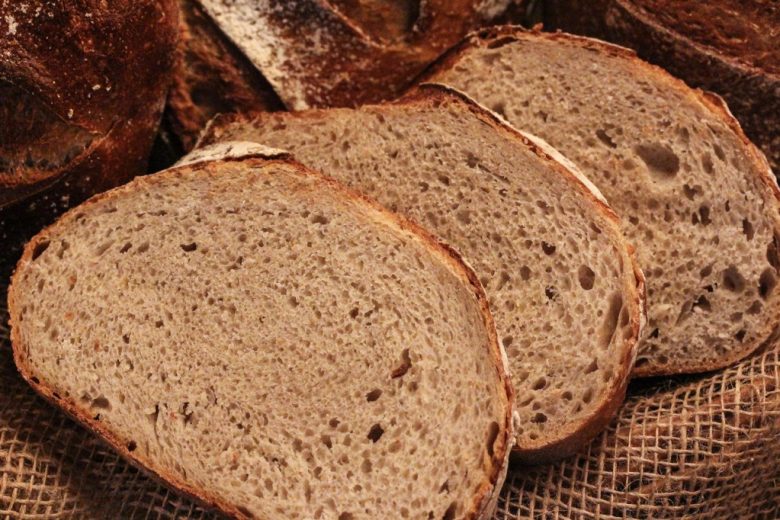Light Country Bread
The total baking time usually determines the point at which bread and other baked goods are completely baked through. The following methods are available to check whether something is actually baked all the way through:
- Checking the core temperature: It should measure between 96-98°C.
- Checking the crust color: Breads and baked goods need to display their characteristic crust coloration.
- Checking the firmness of the crust: By tapping on the bottom of a bread loaf or by pressing rolls, it is possible to determine whether the crumb is baked through.
- Checking the weight: Weigh your baked product.
After being removed from a hot oven, a bread loaf takes 1-2 hours to cool completely at room temperature. During this time, multiple processes are taking place:
- Release of heat into the surroundings: In this process, the pressure from the gas inside the bread decreases, causing a vacuum. The volume decreases, causing the crust to form fine window-like cracks that allow the crust’s aroma to permeate the inside of the bread.
- Evaporation of water: The release of heat causes water to evaporate. Ephemeral aromas are also released. The evaporation of water leads to loss in weight.
- Retrogradation: Once a bread is fully baked, temperatures under 55°C cause the flour starches to dry out. This process leads to bread and baked goods becoming stale.
Going stale (Retrogradation):
Baked goods straight from the oven only stay fresh a short amount of time. After this, changes in the crust and the crumb take place.
- The crust loses its crispness, turning soft, tough and, after a certain time, hard and rough.
- The crumb becomes increasingly stiff and dry, until it’s finally hard and cracked.
- The bread’s aroma disappears after a few days.
Breads start going stale immediately after they have been baked. The reason for this is retrogradation – the recrystallization of the now gelatinized starches. During this process, the starches release part of the water they had bound to them, thereby changing their structure.
Storage temperature plays an important role in preserving freshness, since a bread’s crumb begins to age once the core temperature falls below 60°C. The solidification of the crumb is a sign of aging.
- Temperatures over 60°C: No solidification of the crumb
- Temperatures over 35°C: Aging takes place four times slower than its normal rate, but aroma is lost and there’s the risk that bacillus subtilis (rope spoilage) will sprout
- Around 20°C: normal storage temperature, normal rate of aging
- Around 14°C: fastest formation of crystalline starch structure
- Around 0°C: fastest increase in recrystallization
- Under -5°C: Aging process halted
The water that is freed during retrogradation is transferred from the crumb to the crust, causing the latter to lose its crispiness and become soft and chewy. The water loss causes the crumb to become increasingly dry and stiff until it’s unable to absorb any more water. The resulting loss in weight is known as “storage loss”.
- Bread rolls: 2% after 2 hours / 5-6% after 24 hours
- Breads: 1% after 2 hours/ 2% after 24 hours / 3% after 3 days and increasing
More weight can be lost:
- In small baked goods that have a strong bloom and a lot of crust
- In sliced bread
- In batch bread
Measures to preserve freshness:
To preserve the freshness of baked goods, water loss must be kept to a minimum. This can be done through precise measures that increase the dough’s water retention, improve absorption and also improve the starch’s ability to gelatinize:
- Use darker flours ( W1600, R2500,…)
- Use whole grain flour
- Use an indirect method to make the dough (Use a predough)
- Use a liquidy and cool dough-making method
- Add in old bread
- Bake until well browned (a strong crust reduces water evaporation)
- Add eggs and fat
- Freeze the bread
“Light Country Loaf” Recipe
For a dough weight of 1688g / 2 pieces, each 844g
Rye sourdough:
- 100g rye flour type 960
- 80g water 35°C
- 5g starter
TA: 180 RT: 15-24 hours DT: 32°C decreasing to room temperature
Rye poolish:
- 100g rye flour type 960
- 200g water 30°C
- 1g yeast
TA: 300 RT: 18-24 hours DT: 27-28°C 2 hours – then let it mature in the fridge at 5-6°C
Main dough:
- 185g mature sourdough
- 301g mature rye poolish
- 500g wheat flour type 700
- 300g wheat flour type 1600
- 370g water
- 22g salt
- 10g yeast
Instructions:
- Slowly mix all ingredients together except for the yeast and salt.
- Let it rest for 20 minutes to autolyse.
- After the autolyse, mix in the yeast and the salt and knead it slowly for 7 minutes, then quickly for 5-6 minutes.
- After kneading, cover the dough and let it rest for 30 minutes in the bowl.
- Then divide the dough and form it into rounds.
- Let the rounds rest for 10 minutes and then shape them into oval loaves.
- Let the loaves proof seamside-up at room temperature or in the fridge at 5°C as desired.
- Bake the bread at 250°C with steam.
- After 5 minutes, reduce the temperature to 200°C and bake until well-browned (c. 45-50 minutes).


